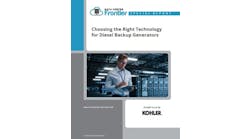Today we continue our Data Center Executive Roundtable, a quarterly feature showcasing the insights of thought leaders on the state of the data center industry, and where it is headed. In today’s discussion, our panel of experienced data center executives – Chris Crosby of Compass Datacenters, Chris Sharp of Digital Realty Trust, Mark Wachtmann of IO, Jeff Klaus of Intel DCM and Michael Custer of Chatsworth Products – will examine how the emergence of hybrid cloud is impacting the world of multi-tenant data centers. The conversation is moderated by Rich Miller, the founder and editor of Data Center Frontier.
Data Center Frontier: The hybrid cloud deployment model appears to be gaining traction with enterprises. How is the emergence of hybrid cloud impacting data center providers’ ability to attract enterprise business, which has historically focused on the need to shift IT workloads out of on-premise facilities?
CHRIS SHARP, Digital Realty
Chris Sharp: The future of the enterprise lies in how to leverage and monetize data, putting increasing pressure on companies to share data easily between all necessary parties. This can prove complex, given most companies today require a mix of dedicated physical data centers, private cloud deployments and public cloud deployments. In order to move data in and out of data centers quickly and securely, companies are beginning to rely on elastic, hybrid clouds made possible by data center and colocation providers like Digital Realty.
Currently, a lot of the onus from network architecture is put on the customer. However, by leveraging the cloud deployments located in their metros (e.g., SoftLayer, AWS) and by allowing customers to stand up their own infrastructure close to the cloud deployments, data center providers can remove architectural complexities for customers. This allows customers to focus solely on their core competencies, which generally don’t include data center management.
Given higher value now relies on access to network connectivity, cloud connectivity and advanced service providers, the forward-thinking data centers of today have evolved into agile and scalable ecosystems made up of connectivity-rich service providers. For example, our clients in Silicon Valley have access to more than 100 network service providers. This network ecosystem allows companies to future-proof their business, meaning they can reside in a secure environment operated by a data center provider and utilize the partners’ advanced network solutions. This level of connectivity allows businesses to build faster with less risk, scale globally, access managed services in a reliable way and easily connect to cloud providers as well as a range of IaaS, PaaS and SaaS solutions.
JEFF KLAUS, Intel
Jeff Klaus: It’s causing an increase in the level of services and analytics they’re providing or looking to expand into. Looking deeper into that, in 2016 and 2017, data center providers will need to continue to express how their solutions are more flexible compared to standard cloud, but still remain at a price advantage compared to managing on the business premises.
When done right, it will offer what hybrid cloud offers – the “best of both worlds” – but will strain the data center providers as they scramble for technologists that can assemble services from these diverse service areas.
Specifically, in the areas of security, access, network stability and process, I think they will add a lot of value, since that matches what they do now (in many ways). But they will still need to wrestle with the value propositions that hybrid offers, specifically around not having to overprovision hardware.
CHRIS CROSBY, Compass Datacenters
Chris Crosby: Let’s start with this fact, for many organizations private cloud is actually on an in-house platform. Secondly, private cloud also includes a bare metal approach of dedicated hardware in many cases. Due to all the definitions of hybrid cloud out there, it is clear that on-premise chews up a big part of the private side of the hybrid cloud. In fact, in many respects I think it actually helps organizations in their search for a data center since the availability of alternative cloud-based platforms enables them to be more specific in defining their requirements.
Since cloud offerings enable them to “outsource” applications with less “restrictive” parameters (security for example), things like capacity planning, determining power requirements and alike have become a bit more manageable than in the past. Security remains a key issue as it relates to the cloud in the minds of CIOs and the world of regulations, and no one is ready to risk the company’s crown jewels via all cloud solution. As a result, the number of applications that are deemed to be “too sensitive” for the cloud are clearly identified as those that need to remain in the corporate facility. This reduces some of the variables (How do I plan for applications that are unknown at this point?) that were previously part of estimating future capacity needs. We find that the companies we talk to have a better grasp of what their requirements really are and don’t want to “overbuy” as a hedge against future capacity needs. Correspondingly, they want to be able to respond quickly when they do determine they need more space and power and we are seeing them place a larger premium on the speed of delivery and the ability to pay as they go in terms of expansion instead of taking on more capacity that they needed to ensure that it was available as has been traditionally defined the acquisition process.
MARK WACHTMANN, IO
Mark Wachtmann: I don’t necessarily see the hybrid cloud restricting the ability to attract enterprise customers. Many data center service providers can offer hybrid cloud solutions within their existing product offerings. Data centers that don’t offer hybrid cloud services will undoubtedly fall behind.
Additionally, the transition to the cloud is not a simple skills translation. There is a steep learning curve, and businesses will need to have the resources to re-build their infrastructure if they want to move directly to a public cloud. Data center service providers that can facilitate the transition to cloud will be more attractive to businesses that need to focus their resources on core business needs. Ease of implementation is how hybrid cloud providers will get a leg up on the public cloud alternative.
MIKE CUSTER, CPI
Michael Custer: It would be hard to imagine a business in 2016 not directly or indirectly engaged in some combination of cloud, colocation, and on-premise compute and storage. How structured that definition of hybrid deployment needs to be remains to be seen, but “and” tends to always have advantages over “or.”
Insourcing and outsourcing trends must in the end be cyclical, as when nearly everyone jumps on the same technology boat, soon the competitive advantage is lost and the next disruptive ship arrives with much excitement and hoopla.
NEXT: The State of the DCIM Market
Keep pace with the fact-moving world of data centers and cloud computing by following us on Twitter and Facebook, connecting with me on LinkedIn, and signing up for our weekly newspaper using the form below:








